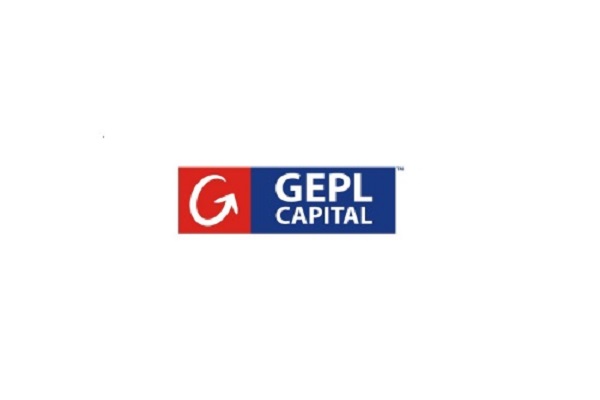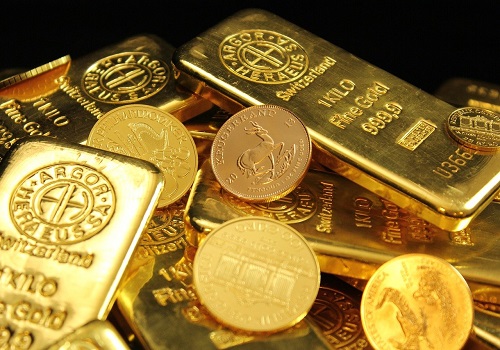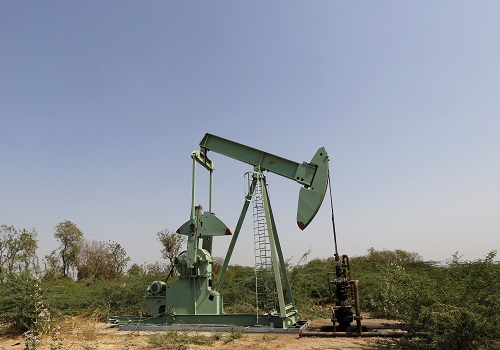Silver trading range for the day is 90720-95110 - Kedia Advisory

Gold
Gold prices edged up by 0.1% to 75,387, supported by expectations of U.S. rate cuts, increased safe-haven demand, and robust central bank buying. The escalation of the Middle East conflict and a weaker U.S. dollar further bolstered gold's appeal to investors. Federal Reserve Governor Adriana Kuglar voiced strong support for last week’s 50-bps rate cut and indicated backing for additional cuts. The CME FedWatch tool now reflects a 60% probability of another 50-bps rate cut in November, adding bullish sentiment for gold. In global markets, China's net gold imports via Hong Kong in August fell sharply by 76%, reaching their lowest level in over two years, at 6.245 metric tons, as record-high prices curbed demand in the world's largest bullion consumer. Similarly, gold imports via Hong Kong dropped by 48% to 16.377 metric tons. In India, gold demand slightly improved but remains far below normal levels as prices near record highs. Indian dealers offered discounts of up to $17 per ounce, down from $22 last week, while Chinese dealers widened discounts to $12-$14 per ounce over global spot prices. Gold demand in the June quarter in India fell by 5% year-on-year, but the second half of 2024 is expected to see an uptick due to import duty reductions and favorable monsoon conditions. Meanwhile, Singapore saw increased retail buying, with premiums ranging between $1 and $2.20. Technically, the market is witnessing short covering, as indicated by a 35.63% drop in open interest, settling at 4,128 contracts. Prices gained by 74 rupees, with support at 75,115 and potential to test 74,845 below. Resistance is seen at 75,690, and a move above could lead to testing 75,995.
Trading Ideas:
* Gold trading range for the day is 74845-75995.
* Gold prices gains fuelled by U.S. rate cuts, safe-haven demand and robust central bank buying.
* Fed’s Kuglar said she "strongly supported" last week's 50-bps rate cut and "will support additional rate cuts going forward."
* China's August net gold imports via HK lowest in over 2 years
Silver
Silver settled up by 0.67% at 92,664, driven by interest rate cuts from major central banks and growing industrial demand. A significant portion of silver's demand comes from its use in photovoltaic products like solar panels, where its usage has nearly doubled over the past year. The U.S. Federal Reserve recently delivered a sharper-than-expected 50bps rate cut, with FOMC members indicating that further cuts may be necessary due to softening inflation and a weakening labor market. Silver also gained support from aggressive fiscal and monetary stimulus measures aimed at bolstering the world's second-largest economy. This, along with the rise in industrial metals, has improved the outlook for silver-intensive sectors such as electrification technologies and solar panel manufacturing. India’s silver imports are projected to nearly double this year, driven by increased demand from solar panel and electronics manufacturers, as well as investors seeking better returns compared to gold. The country, which is the world's largest silver consumer, imported 3,625 metric tons in 2023 and has already brought in 4,554 tons in the first half of 2024. Industrial buyers are stockpiling silver to hedge against rising prices, following depleted inventories last year. Technically, the market is witnessing short covering, with a slight drop in open interest by 1.26% to 25,520 contracts, while prices rose by 619. Silver has strong support at 91,690, and if this level breaks, prices could test 90,720. On the upside, resistance is expected at 93,885, and a move above that could lead to testing 95,110.
.
Trading Ideas:
* Silver trading range for the day is 90720-95110.
* Silver prices rallied on interest rate cuts by major central banks.
* Silver sets highest level since Dec 2012 at $32.71 per ounce.
* The bulk of the demand for silver has been driven by the industrial sector.
Crude oil
Crude oil prices declined by -3.05% to settle at 5,663, amid reports that Saudi Arabia is preparing to abandon its unofficial price target of $100 per barrel and may increase output. This shift in strategy could signal a more flexible production policy from the kingdom. Additionally, a United Nations statement indicated progress in Libya, where delegates from the country's east and west agreed on appointing a central bank governor, potentially resolving issues over oil revenue control that have disrupted exports. Libya's crude exports in September averaged 400,000 barrels per day (bpd), a significant drop from over 1 million bpd in August. In the U.S., crude oil inventories fell by 4.471 million barrels in the week ending September 20th, 2024, far exceeding market expectations of a 1.4 million barrel decline. Meanwhile, stocks at the Cushing delivery hub rose by 0.116 million barrels, while gasoline inventories dropped by 1.538 million barrels, worse than the forecasted 0.02 million decrease. Distillate stockpiles, including diesel and heating oil, fell by 2.227 million barrels, below the expected 1.6 million decrease. China's crude oil imports fell by 7% year-on-year in August, reflecting weak refining margins and sluggish fuel consumption. Imports totaled 49.10 million metric tons, up from July's 42.34 million tons but still below earlier highs. Annual demand growth has slowed significantly post-pandemic, impacting the broader oil market. Technically, the crude oil market is witnessing fresh selling pressure, with a 22.03% increase in open interest to 19,544 contracts. Prices fell by 178 rupees, with support at 5,572 and a potential test of 5,482. Resistance is seen at 5,807, and a move above this level could push prices toward 5,952.
Trading Ideas:
* Crudeoil trading range for the day is 5482-5952.
* Crude oil slipped on reports that Saudi Arabia, will give up its price target in preparation for raising output.
* Saudi Arabia is preparing to abandon its unofficial price target of $100 a barrel for crude as it prepares to increase output.
* Libya's crude exports have averaged about 400,000 bpd in September, down from over 1 mbpd in August
Natural gas
Natural gas prices declined by 2.67%, settling at 230, after the EIA reported a larger-than-expected storage build. The market also faced pressure from forecasts of reduced demand in the upcoming weeks. Gas output in the Lower 48 U.S. states has decreased to an average of 102.0 billion cubic feet per day (bcfd) in September, down from 103.2 bcfd in August, with a significant drop to a three-month low of 100.2 bcfd in recent days. Meanwhile, milder autumn weather is expected to reduce gas demand, with forecasts lowering demand to 97.6 bcfd next week. LNG exports have slightly declined to an average of 12.8 bcfd in September, down from 12.9 bcfd in August. U.S. natural gas production is projected to fall in 2024, with the EIA forecasting a drop from a record 103.8 bcfd in 2023 to 103.4 bcfd in 2024, as some producers reduce drilling due to low gas prices. However, the EIA expects production to increase to 104.8 bcfd in 2025. Domestic gas consumption is also projected to rise to a record 89.9 bcfd in 2024, before easing slightly in 2025. U.S. utilities added 47 billion cubic feet of gas into storage for the week ending September 20, 2024, below market expectations of 52 bcf. This brings total stockpiles to 3,492 bcf, which is 159 bcf higher than last year and 233 bcf above the five-year average. Technically, the market is under fresh selling pressure, with open interest increasing by 13.58% to 22,654 contracts. Natural gas prices are supported at 225.7, with a break below potentially testing 221.4. Resistance is likely at 237.9, and a move above this could push prices towards 245.8.
Trading Ideas:
* Naturalgas trading range for the day is 221.4-245.8.
* Natural gas dropped after EIA reported a bigger-than-expected storage build.
* Pressure also seen on forecasts for less demand over the next two weeks than previously expected.
* US utilities added 47 billion cubic feet of gas into storage
Copper
Copper prices rose by 2.58% to settle at 862.3, driven by optimism about stronger demand following China's pledge to deploy "necessary fiscal spending" to achieve its 5% economic growth target for the year. Additionally, the U.S. Federal Reserve’s recent rate cut and China’s supportive measures, including reducing medium-term loan rates, contributed to the positive sentiment. China's central bank also announced plans to inject more funds into the economy and ease the mortgage repayment burden for households, further boosting market confidence. In Europe, Aurubis, the region's largest copper smelter, will maintain its copper premium at $228 per metric ton for 2024, reflecting weak demand amid subdued manufacturing activity. China's refined copper exports in August fell 56% from the previous month but were 50% higher year-on-year. Meanwhile, refined copper production in China rose 0.9% year-on-year to 1.12 million metric tons in August. Globally, the copper market showed a surplus of 95,000 metric tons in June, up from a 63,000-ton surplus in May, according to the International Copper Study Group (ICSG). For the first half of the year, the global surplus reached 488,000 metric tons. China's copper imports in August fell to a 16-month low, with unwrought copper imports dropping 12.3% year-on-year to 415,000 metric tons. Copper concentrate imports also declined by 4.7% in August but remained up 3.2% for the first eight months of the year. Technically, copper is experiencing fresh buying, with a 9.05% increase in open interest to 8,877 contracts. Prices rose by 21.65 rupees, with support at 846.6 and potential to test 830.9 below. Resistance is seen at 870.4, and a move above this level could push prices toward 878.5.
Trading Ideas:
* Copper trading range for the day is 830.9-878.5.
* Copper gains amid China's Fiscal spending
* China's pledge to deploy "necessary fiscal spending" to meet 5% economic growth target.
* World refined copper market in 469,000 t surplus in 2024; 194,000 t surplus in 2025 – ICSG
Zinc
Zinc prices surged by 3.08%, settling at 282.5, as China implemented extensive stimulus measures to revive its slowing economy. China's central bank introduced its largest stimulus package since the pandemic to counteract deflationary pressures. Despite a 4.8% rise in zinc inventories monitored by the Shanghai Futures Exchange, overall zinc stockpiles remained at 114,500 mt. The Shanghai region saw an increase in inventory due to imported zinc arrivals and restocking needs post-holiday, while Guangdong's inventory rose significantly due to weak downstream demand and higher warehouse arrivals. Refined zinc imports in August 2024 were up 44.24% MoM at 26,500 mt but down 9.01% YoY, with cumulative imports from January to August rising by 30.72% YoY to 267,000 mt. On the supply side, Boliden's delay in expanding its Odda zinc smelter in Norway until 2025 may lead to future supply tightening. Additionally, the global zinc market surplus shrank to 14,000 metric tons in July, compared to 36,400 tons in June, reflecting a narrowing surplus trend for the year. China's refined zinc production in August declined by 0.68% MoM and 7.64% YoY due to factors like heavy rains in Sichuan, power rationing, and raw material procurement difficulties, though some smelters resumed operations after maintenance. Despite these challenges, the overall production decline was minor. Technically, zinc is under fresh buying pressure with a 28.02% rise in open interest to 3,349 contracts. The metal has support at 276.4, with a break below potentially testing 270.3. Resistance is expected at 285.8, and a move above this level could push prices towards 289.1.
Trading Ideas:
* Zinc trading range for the day is 270.3-289.1.
* Zinc prices gained after China unleashed wide-ranging stimulus measures
* Refined zinc imports in August 2024 were 26,500 mt, up 8,200 mt or 44.24% MoM
* China unexpectedly leaving benchmark lending rates unchanged at the monthly fixing.
Aluminium
Aluminium prices rose by 2.37% to settle at 239.3, driven by optimism following pledges from Chinese officials to implement additional fiscal measures aimed at supporting the country’s economic growth, which is targeted at roughly 5% for the year. Despite a slew of disappointing economic data from China, especially in the property sector, Chinese leaders vowed to deploy "necessary fiscal spending" to stimulate growth. China's central bank also lowered the cost of medium-term loans to banks, easing financial burdens and boosting economic sentiment. Global primary aluminium output in August rose 1.2% year-on-year to 6.179 million metric tons, with China, the world's largest aluminium producer, contributing 3.69 million metric tons. China's August aluminium output hit its highest level since 2002, reflecting a 2.5% year-on-year increase due to higher prices and steady profits, which have kept smelters operating at high levels. In the first eight months of 2024, China produced 28.91 million tons of aluminium, up 5.1% from the same period last year. Meanwhile, aluminium stocks at Japan's three major ports rose 9.2% month-on-month to 327,300 metric tons by the end of August. Despite high production, global aluminium markets remain in surplus, with a 930,000-ton excess recorded in the first seven months of 2024. Technically, aluminium is seeing short covering, as indicated by a 3.44% drop in open interest to 3,423 contracts. Prices increased by 5.55 rupees, with support at 235.2 and potential to test 230.9 if prices drop. On the upside, resistance is seen at 241.7, and a break above this level could lead to testing 243.9.
Trading Ideas:
* Aluminium trading range for the day is 230.9-243.9.
* Aluminium gains China pledges more fiscal stimulus measures
* Chinese leaders vowed to deploy "necessary fiscal spending" to meet this year's economic growth target of roughly 5%.
* China's Aug aluminium imports up 1.9% y/y.
Cottoncandy
Cottoncandy prices settled up by 0.43% at 58,490, driven by concerns over reduced cotton production. The USDA has lowered India's cotton production forecast for the 2024-25 season to 30.72 million bales due to crop damage from excessive rains and pest issues, while ending stocks were also reduced to 12.38 million bales. Additionally, cotton acreage in the current kharif season is down by 9%, further supporting prices. However, the upside was limited as new raw cotton arrivals have started in Punjab mandis. Cotton exports for the 2023-24 season are estimated at 28 lakh bales, up from 15.5 lakh bales last year, driven by strong demand from Bangladesh and Vietnam. The Cotton Association of India (CAI) estimated exports till August end at 27 lakh bales, while imports rose to 16.4 lakh bales from 12.5 lakh bales a year ago. Closing stocks as of September 30, 2024, are projected at 23.32 lakh bales, down from 28.9 lakh bales last year. Globally, the U.S. cotton balance sheet for 2024/25 has been revised lower, with reduced production, exports, and ending stocks. The U.S. production forecast dropped by 600,000 bales to 14.5 million bales, largely due to lower yields in the Southwest. World cotton production was also reduced by 1.2 million bales, primarily in the U.S., India, and Pakistan. Global consumption and trade were also lowered, with reduced demand in Vietnam, Bangladesh, and Turkey. Technically, the market is witnessing fresh buying, with a 7% increase in open interest to 107 contracts. Cottoncandy has support at 58,280, with a break below potentially testing 58,070. Resistance is likely at 58,650, and a move above this could push prices toward 58,810.
Trading Ideas:
* Cottoncandy trading range for the day is 58070-58810.
* Cotton gains as USDA has lowered India's production forecast for the 2024-25 season to 30.72 million bales
* Cotton exports for the 2023-24 crop year or season ending September are estimated at about 80 per cent at 28 lakh bales
* The U.S. cotton balance sheet for 2024/25 shows lower production, exports, and ending stocks compared to last month.
* In the global 2024/25 cotton balance sheet, beginning stocks, production and consumption are increased.
Turmeric
Turmeric prices declined by -1.12% to settle at 14,542 due to profit booking after recent gains. Prices had previously surged on reports of crop damage from heavy rains in Nanded and Hingoli, suggesting losses may be greater than initially estimated. Total arrivals dropped to 14,915 bags, down from 16,975 bags in the previous session, with a significant decline at Sangli, where arrivals fell to 890 bags compared to 11,000 in the previous session. Despite five months remaining until harvest, the combination of low supply and adverse weather is expected to push prices higher in the coming weeks. However, upside potential is capped by news of increased sowing across major turmeric-producing regions like Maharashtra, Telangana, and Andhra Pradesh. Sowing on the Erode line is reported to be double compared to last year, while total sowing in India is estimated to rise to 3.75-4 lakh hectares, up from 3-3.25 lakh hectares last year. Despite increased acreage, the 2024 turmeric crop is expected to be around 70-75 lakh bags, lower than the demand for 2025, indicating tight supply in the coming year. Turmeric exports during April-July 2024 dropped by 13.97% to 61,609.83 tonnes, though July saw a 9.17% year-on-year rise in exports. Imports surged by 429.58% during April-July 2024, with a 256.17% increase in July 2024 compared to the same period in 2023. Technically, the market is experiencing fresh selling pressure, as open interest increased by 0.34% to 13,380 contracts. Prices fell by 164 rupees, with support seen at 14,346 and a potential test of 14,152 below. Resistance is expected at 14,756, and a break above could lead to prices testing 14,972.
Trading Ideas:
* Turmeric trading range for the day is 14152-14972.
* Turmeric dropped on profit booking after prices gained amid reports of crop damage due to heavy rains
* Total arrivals were reported at 14,915 bags, lower than the previous session's 16,975 bags.
* Turmeric sowing on the Erode line is reported to be double as compared to last year
* In Nizamabad, a major spot market, the price ended at 14710.35 Rupees gained by 0.07 percent.
Jeera
Jeera prices settled down by 0.07% at 26,990 due to expectations of higher production. However, the downside was limited by strong domestic and export demand, along with tight global supplies. Farmers are holding back stocks in anticipation of better prices, further supporting the market. In India, jeera production is projected to rise by 30% this season, reaching 8.5-9 lakh tonnes, driven by a significant increase in sowing areas—up 104% in Gujarat and 16% in Rajasthan. Globally, jeera production is also on the rise, with China’s output doubling to 55-60 thousand tonnes, and other countries like Syria, Turkey, and Afghanistan increasing their production due to high prices last season. Turkey is expected to produce 12-15 thousand tonnes, while Afghanistan’s output may double, weather permitting. These new supplies are likely to pressure prices in the coming months. India's cumin exports during April-July 2024 rose by 58.31% to 91,070 tonnes, compared to 57,526 tonnes during the same period in 2023. In July 2024, exports increased by 110.15% year-on-year, reflecting robust global demand. Despite this, reduced export trade and the prospect of higher production are weighing on prices. Technically, jeera is experiencing long liquidation, with open interest dropping by 4.18% to 2,130 contracts. Jeera prices are currently supported at 26,800, and a break below this level could see a test of 26,600. On the upside, resistance is likely at 27,240, with a move above this level potentially leading to prices testing 27,480.
Trading Ideas:
* Jeera trading range for the day is 26600-27480.
* Jeera dropped as the expectation of higher production weighed on the prices.
* However downside seen limited amid robust domestic and export demand besides tight global supplies.
* Turkey anticipates producing 12-15 thousand tons, while Afghanistan's output could double.
* In Unjha, a major spot market, the price ended at 26742.05 Rupees dropped by -0.37 percent.





















